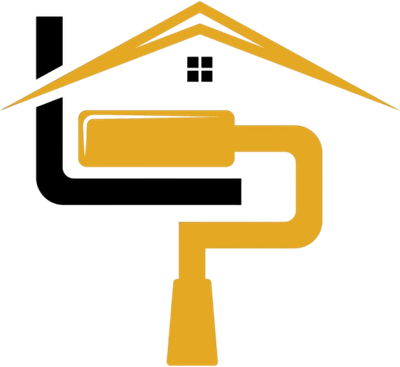Setting Clear Expectations and Standards for the Team
Key Features
- Clarity: Clear expectations prevent misunderstandings and ensure everyone knows their role.
- Accountability: Regular check-ins and performance metrics keep the team on track.
- Professional Growth: Setting high standards encourages continuous improvement and skill development.
Setting Clear Expectations and Standards for Your Team
In any construction or painting business, clear expectations and standards are the foundation for a successful and efficient team. At Lightmen Painting, we know firsthand how vital it is to set the tone for collaboration, quality, and accountability. A well-structured approach helps align everyone’s efforts and ensures consistent results across projects. Whether you're leading a team of painters or managing a large-scale construction site, this guide will help you establish expectations and standards that lead to outstanding performance.
Why Are Clear Expectations and Standards Important?
1. Consistency in Quality
When everyone understands what’s expected, the quality of work remains consistent, which helps build trust with clients.
2. Improved Team Morale
Clarity reduces misunderstandings, fosters a sense of purpose, and creates a positive work environment.
3. Streamlined Communication
Defined standards minimize the need for constant supervision and provide a framework for resolving issues effectively.
Things to Know
- Clarity is key. Be specific when setting goals and expectations for your team.
- Consistency builds trust. Apply standards fairly to ensure everyone feels valued.
- Support your team. Provide training and resources to help them meet expectations.
- Feedback drives improvement. Regular check-ins help address issues before they escalate.
- Lead by example. Model the behavior and work ethic you want your team to follow.
What Are Expectations and Standards in a Team?
Expectations and standards are the benchmarks for performance and behavior that everyone on the team agrees to follow. They include:
- Performance Goals: Metrics or outcomes each team member should achieve.
- Behavioral Standards: Guidelines for professionalism, communication, and teamwork.
- Safety Protocols: Specific measures to ensure workplace safety and compliance with regulations.
How to Set Clear Expectations for Your Team
1. Define Specific Goals
Make sure your goals are SMART: Specific, Measurable, Achievable, Relevant, and Time-bound. For example, instead of saying, “Finish the project quickly,” say, “Complete the interior painting by Friday while maintaining a flawless finish.”
2. Involve the Team
Get input from your team when setting expectations. This makes them feel valued and ensures that the goals are realistic.
3. Communicate Clearly
Use simple, direct language when outlining expectations. Repeat key points to ensure understanding and provide written guidelines when possible.
4. Lead by Example
Demonstrate the behavior and work ethic you want your team to emulate. If punctuality is important, ensure you’re always on time.
5. Provide the Right Tools and Resources
Equip your team with everything they need to meet expectations, from high-quality equipment to proper training.
In Our Experience
"We’ve learned that clarity and consistency are the keys to a well-functioning team. By setting clear expectations and aligning everyone to the same standards, we’ve created a work environment where everyone knows their role, meets deadlines, and delivers exceptional results. The effort you put into defining these benchmarks pays off in higher morale, better performance, and happier clients."
Establishing Team Standards
1. Quality Standards
Define what “high-quality work” means for your team. At Lightmen Painting, this includes smooth finishes, precise edges, and spotless cleanup after each job.
2. Safety Standards
Develop clear safety protocols, such as wearing protective gear, handling hazardous materials responsibly, and following OSHA regulations.
3. Professionalism
Set guidelines for behavior, including punctuality, respectful communication, and maintaining a professional appearance on job sites.
4. Accountability
Hold team members accountable for their roles by setting up regular check-ins, progress reports, or performance reviews.
Tools for Setting and Tracking Standards
| Tool | Purpose |
|---|---|
| Team Meetings | Communicate expectations and address concerns. |
| Performance Metrics | Track progress toward specific goals. |
| Project Management Software | Organize schedules, tasks, and deadlines. |
| Checklists | Ensure all tasks meet quality and safety standards. |
| Training Programs | Equip team members with the skills needed to succeed. |
Common Challenges in Setting Expectations
| Challenge | Solution |
|---|---|
| Lack of Clarity | Use specific, measurable language. |
| Resistance to Change | Involve the team in setting standards. |
| Inconsistent Enforcement | Apply standards uniformly to everyone. |
| Insufficient Resources | Provide tools, training, and support. |
People Also Ask
Why are expectations important for a team?
Expectations provide clarity, foster accountability, and ensure that everyone is aligned toward common goals.
How can I ensure my team meets standards?
Communicate clearly, provide regular feedback, and hold team members accountable through performance reviews and progress check-ins.
What tools can help track team performance?
Project management software, checklists, and performance metrics are all effective tools for monitoring progress and maintaining standards.
Keyword Definitions
- SMART Goals: Goals that are Specific, Measurable, Achievable, Relevant, and Time-bound.
- Team Standards: Agreed-upon benchmarks for performance, safety, and behavior.
- Performance Metrics: Quantifiable measures used to assess progress toward goals.
- Accountability: Holding individuals responsible for meeting their commitments.
- Professionalism: Conducting oneself in a respectful, punctual, and reliable manner.
- Safety Protocols: Procedures designed to protect workers from hazards.
- OSHA Compliance: Adherence to Occupational Safety and Health Administration regulations.
- Project Management Software: Tools for organizing schedules, tasks, and communications.
- Feedback Loop: A system for providing constructive feedback and making improvements.
- Team Alignment: Ensuring everyone is working toward shared goals and values.
